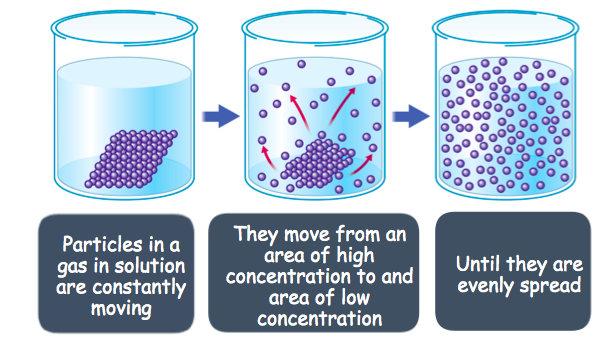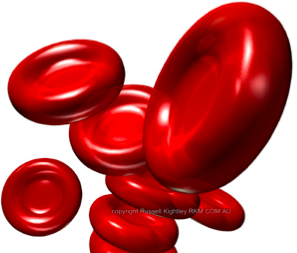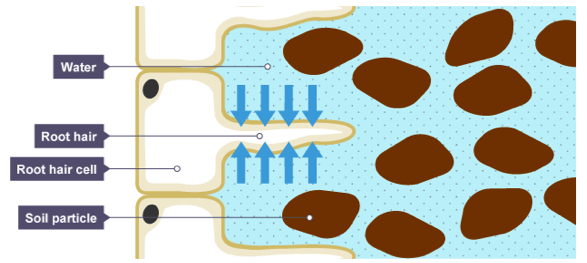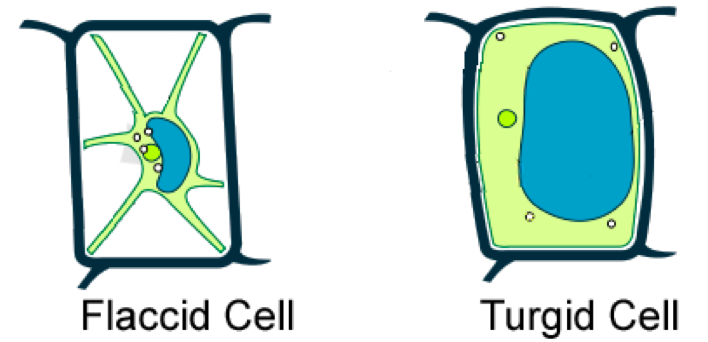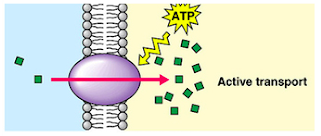Transport in Cells
Concentration Gradient
Substances can move across cell membranes. This is how substances are transported into and out of cells.
- The rate in which substances can move across the cell membrane will depend on the concentration gradient.
- If there are more particles within a specific volume, those particles are considered ‘concentrated’.
- A solution will have a low concentration of solute if there is a high water potential.
- There is a concentration gradient when there is a region of high concentration, and a region of low concentration.
It is considered going __down __the concentration gradient if the substance is going from high to low concentration.
It is considered going __against __the concentration gradient if the substance is going from low to high concentration.
Diffusion
Diffusion is when particles spread from an area of high concentration to an area of low concentration.
The molecules would move randomly, and they would eventually become evenly distributed. The particles move down the “concentration gradient” and this process takes no energy (it’s a “passive process”).
Diffusion can be accelerated by increasing the temperature of the particles, which makes them move faster.
Examples of diffusion:
- When someone sprays perfume on themselves, but the smell ends up spreading across the room.
- When placing potassium permanganate crystals into beaker full of water, the entire beaker of water will turn purple
- Products of digestion are normally dissolved in water, which then pass through the small intestine walls
- Oxygen moving down the concentration gradient as it moves from the air in the alveoli into the blood
- Carbon dioxide moving down the concentration gradient from the blood to the air in the alveoli
Osmosis
Osmosis__ is a specific type of __diffusion.
It is the movement of water from a high to low concentration through a__ partially permeable membrane__. (Partially permeable membrane means that the membrane will only allow a certain type of substances to go through the membrane).
If you have a dilute solution, then it would contain a high concentration of water molecules. On the other hand, if you have a concentrated solution, then it would contain a low concentration of water molecules. The water particles move down the “concentration gradient” and this process takes no energy (it’s a “passive” process”).
Key examples:
If a red blood cell is placed in water, water __enters __the cell by osmosis. Because the membrane is quite weak the cell will __burst __as the volume and therefore the pressure in the cell.
Plants __absorb __water from the soil by osmosis.
Root hair cells are adapted for this by having a large surface area to speed up osmosis.
Plants __need __water because:
- it used in photosynthesis to make its own food
- it supports leaves and shoots by keeping the cells rigid
- it cools the leaves by evaporation
- it transports dissolved minerals around the plant
If a plant does not have enough water, it will be__ __flaccid - this will mean that there is low pressure inside of the cell. If a plant has lots of water, it will be turgid - this will mean that there is a high pressure inside of the cell.
Active Transport
Active transport is the opposite of diffusion and osmosis as particles move from a region of low concentration to a region of high concentration.
In order to transport the dissolved molecules from a region of low to high concentration, it requires energy which is released during cell respiration.
Some cell membranes will have carrier proteins embedded, as it is needed to absorb the high concentration molecules from the outside of the cell, into the inside of the cell.
This works against the concentration gradient.
Examples of active transport__:__
- In the small intestine, epithelial cells in the villi will absorb glucose.
- Plant root hair cells absorb ions from the soil water.
Active transport using a carrier protein:
Key:
- Purple oval: carrier protein
- ATP: energy required to move the particles from a low to high concentration
- Green squares: substances that are moving from a region of low to high concentration
- What are the three types of transport in cells?
- Your answer should include: Diffusion / Osmosis / Active
Explanation: Diffusion is the passive movement of particles from an area of high concentration to an area of low concentration Osmosis is the diffusion of water Active transport is an energy-requiring process that goes against the concentration gradient - Which type of transport in cell requires energy (ATP)?
- Active
Explanation: Active Transport
